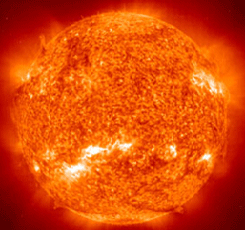
These situation-specific forms of measurement are more useful for understanding ionization hazards than is the more generic concept of radiant energy. They are instead described in terms of subject-specific units such as becquerels (amount of activity), coulombs/kilogram (amount of exposure), grays (absorbed dose), and sieverts (dose equivalent). However, measurements related to ionizing radiation are not usually described in terms of radiant energy. Electromagnetic energy (or radiant energy) is energy from light or electromagnetic waves. To study the different example of electrical energy to radiant energy. An example includes x-rays, microwaves, etc. This form of radiation can cause cancer and other illnesses. The electrical energy gets converted into heat waves these waves consist of energy called radiant energy. Radiant energy is a type of kinetic energy that is always in motion travelling through medium or space. Let us look at some of the kinetic energy examples and learn more about the different types of kinetic energy. Ionizing radiation, such as gamma radiation, can also be described as radiant energy. There are five types of kinetic energy: radiant, thermal, sound, electrical and mechanical. Industrial lasers also emit a higher-energy form of radiation, and even short lengths of exposure may be sufficient to injure workers if appropriate eye protection is not worn.

Any significant length of optical exposure to the high levels of visible radiation emitted by activities such as welding requires the use of mandatory PPE eyewear to prevent eye damage. The non-thermal contexts in which radiant energy plays a significant role are primarily those related to the potential harmful exposure to visible light, including exposure to lasers. Threshold limit values for exposure to environmental heat are described with reference to “wet-bulb globe temperature,” a measurement of apparent temperature that accounts for the role radiant energy plays in producing environmental heat.

An example of radiant is the beam on a womans face when she finds out she is having a baby. For example, the temperature experienced by humans (called apparent temperature) is heavily influenced by sources of visible and infrared radiation (e.g., sunlight, fire). The definition of radiant is glowing, bright and sending out rays.

Radiant energy is chiefly relevant to occupational health and safety issues involving heat and light.


 0 kommentar(er)
0 kommentar(er)
